Introduction to tangzhong, the secret to softer bread
A technique for plush bread, squishy rolls, and bakes that last for days.
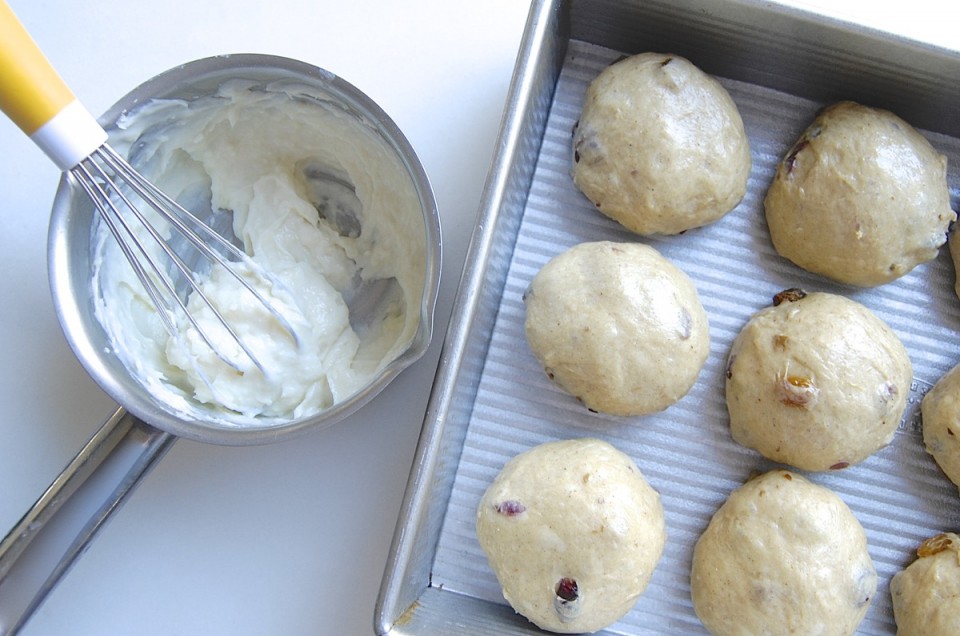

How can you elevate your favorite dinner rolls to new levels of pillow-y softness — in one simple step? Ditto your old-fashioned sandwich bread, tender cinnamon rolls, and gooey sticky buns. The answer: tangzhong, the Asian yeast bread technique that has made its way into American kitchens.
These days, with “artisan” the byword for many yeast bakers, we aspire to breads that are ever more crusty/chewy: pizza crust, baguettes, bagels.
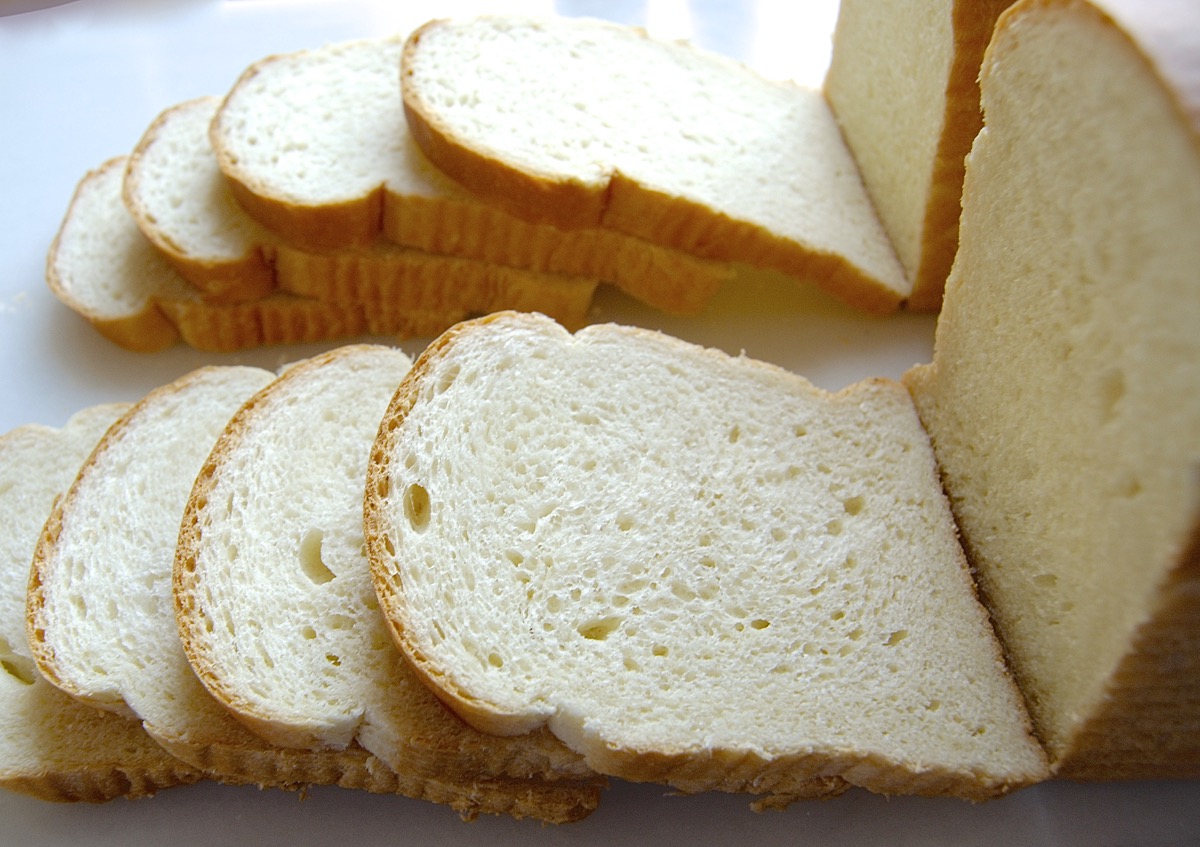
But let’s not lose sight of a whole world of classic soft yeast breads: the sliced white bread of our youthful sandwiches, the Sunday morning platter of tender sticky buns.
Sadly, all too often our quest for super-soft rolls falls far short of our dreams. The brioche buns are oddly dry and chewy; the cinnamon rolls, downright tough. What’s a frustrated baker to do?
Tangzhong: the quick and easy path to softer, more tender dinner rolls, sandwich loaves, and cinnamon buns.
This Asian technique — which has origins in Japan's yukone (or yudane) and was popularized across Asia by Taiwanese cookbook author Yvonne Chen — cooks a small percentage of the flour and liquid (water or milk) in a yeast recipe very briefly before combining the resulting thick slurry with the remaining ingredients.
How does this technique affect yeast dough? It pre-gelatinizes the starches in the flour, meaning they can absorb more water. In fact, flour will absorb twice as much hot water or milk as it does the cool/lukewarm water or milk you'd usually use in yeast dough.
Not only does the starch in the flour absorb more liquid; since heating the starch with water creates structure, it's able to hold onto that extra liquid throughout the kneading, baking, and cooling processes. Which in turn means:
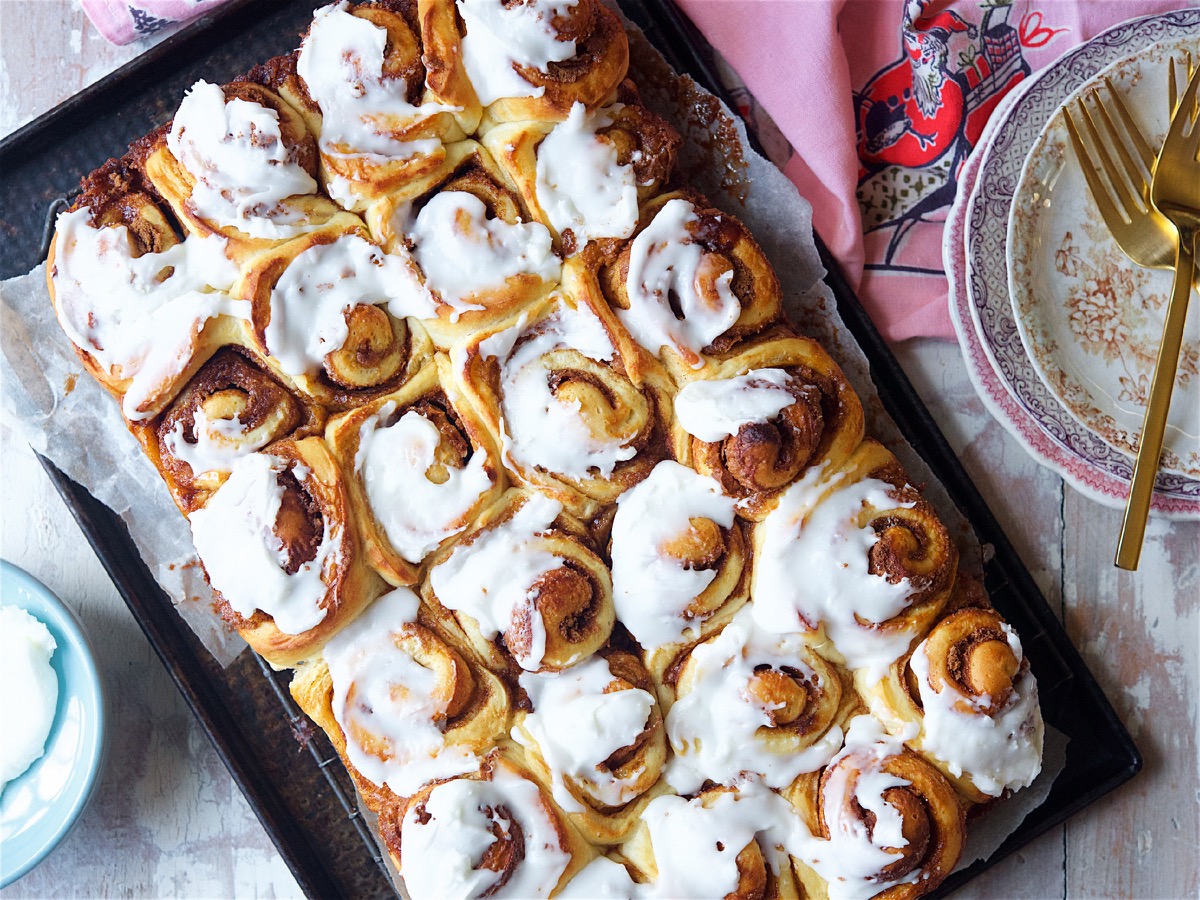
One of our current recipes using tangzhong is Soft Cinnamon Rolls. An enthusiastic reader review recently caught our eye:
“This is the best cinnamon roll recipe ever! I have been making cinnamon rolls for 55 years and have never found a recipe quite like this. These rolls stay soft a long time — up to a week… I mail cinnamon rolls to childhood friends who live a great distance from me. Even if it takes the postal service a week to deliver the rolls, they are still soft!” — Retired editor from Upper Sandusky, OH
That’s tangzhong in a nutshell: soft rolls (or bread) that stay soft for an extended period, making them perfect for shipping, or simply for making one day, then enjoying the next. And the next, and the next …
While nothing beats a freshly baked, oven-warm roll, tangzhong delivers results that are a very close second — without the pressure of having to bake right before serving.
Let’s see how this works with our recipe for Easy Hot Cross Buns.
As directed in a tip at the bottom of the recipe, I measure out the total amount of flour and milk I'll be using in the recipe.
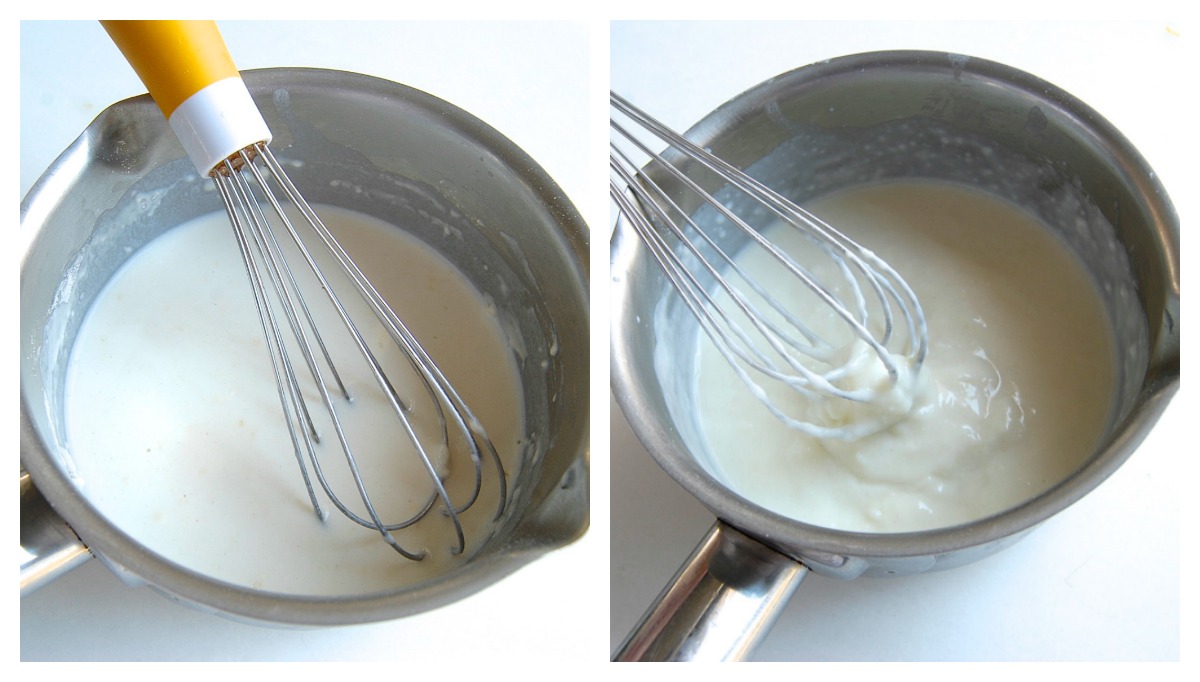
Now I take 3 tablespoons of the measured flour and 1/2 cup of the measured milk and put them in a saucepan set over medium-high heat (left, above). I cook the mixture, whisking constantly; it quickly starts to thicken (right, above).
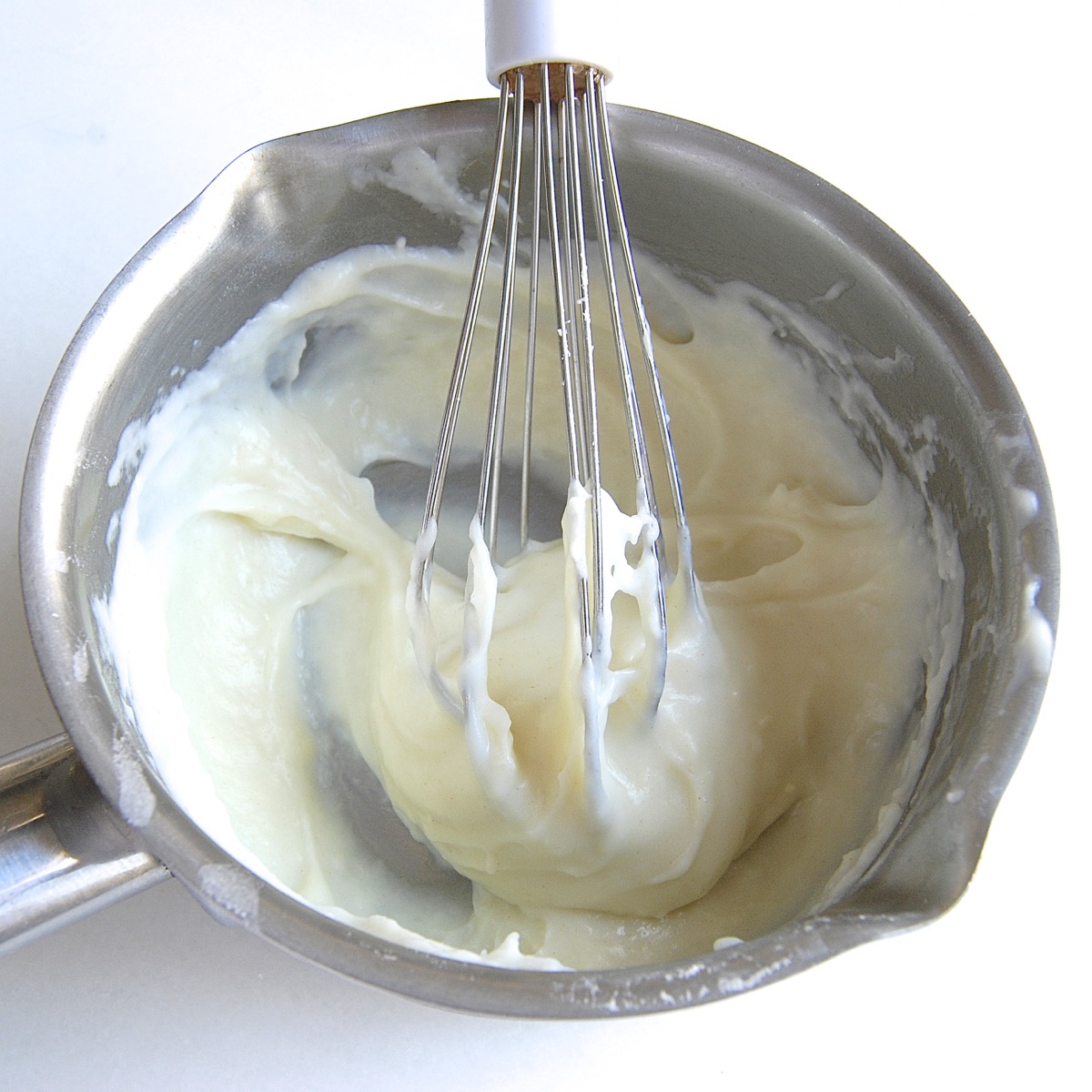
Within a minute or so the mixture becomes a thick slurry.
I transfer the cooked mixture to a bowl, let it cool to lukewarm, then combine it with the remaining flour, milk, and other dough ingredients.
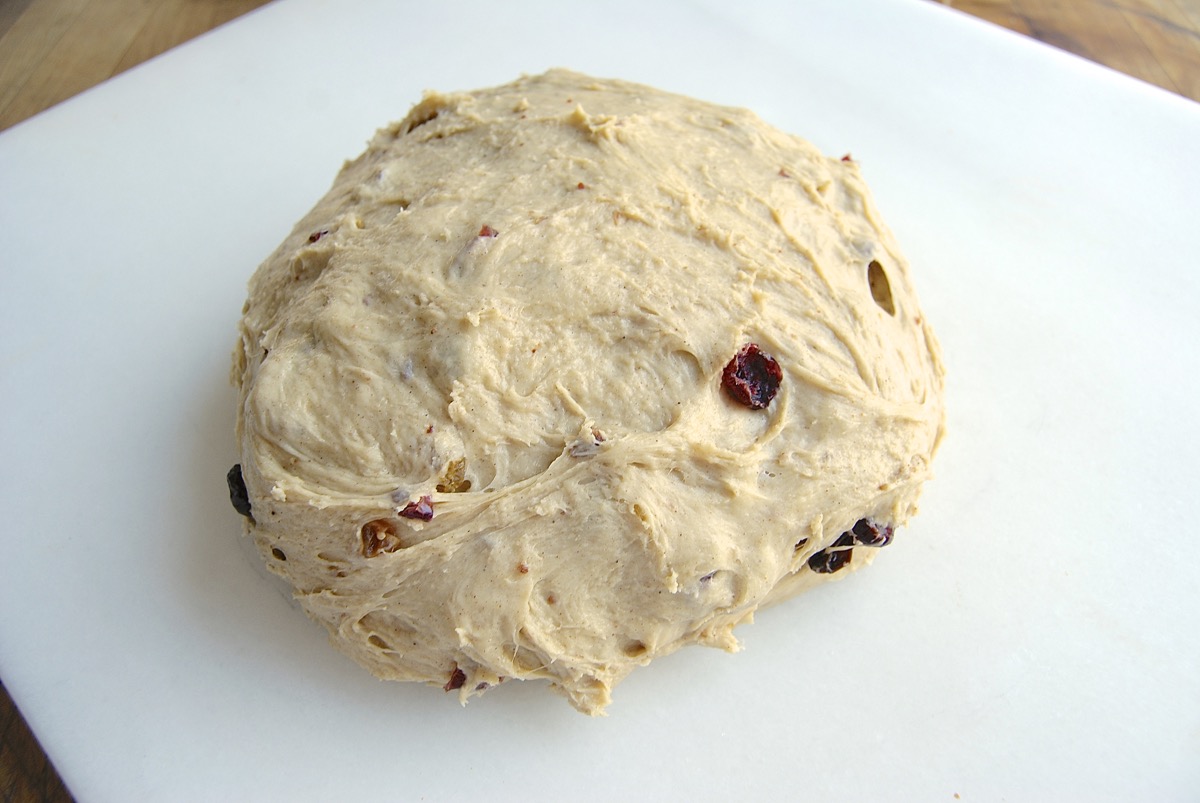
I proceed with the recipe as directed: kneading the dough (above); letting it rise; shaping the buns; letting them rise, and baking.
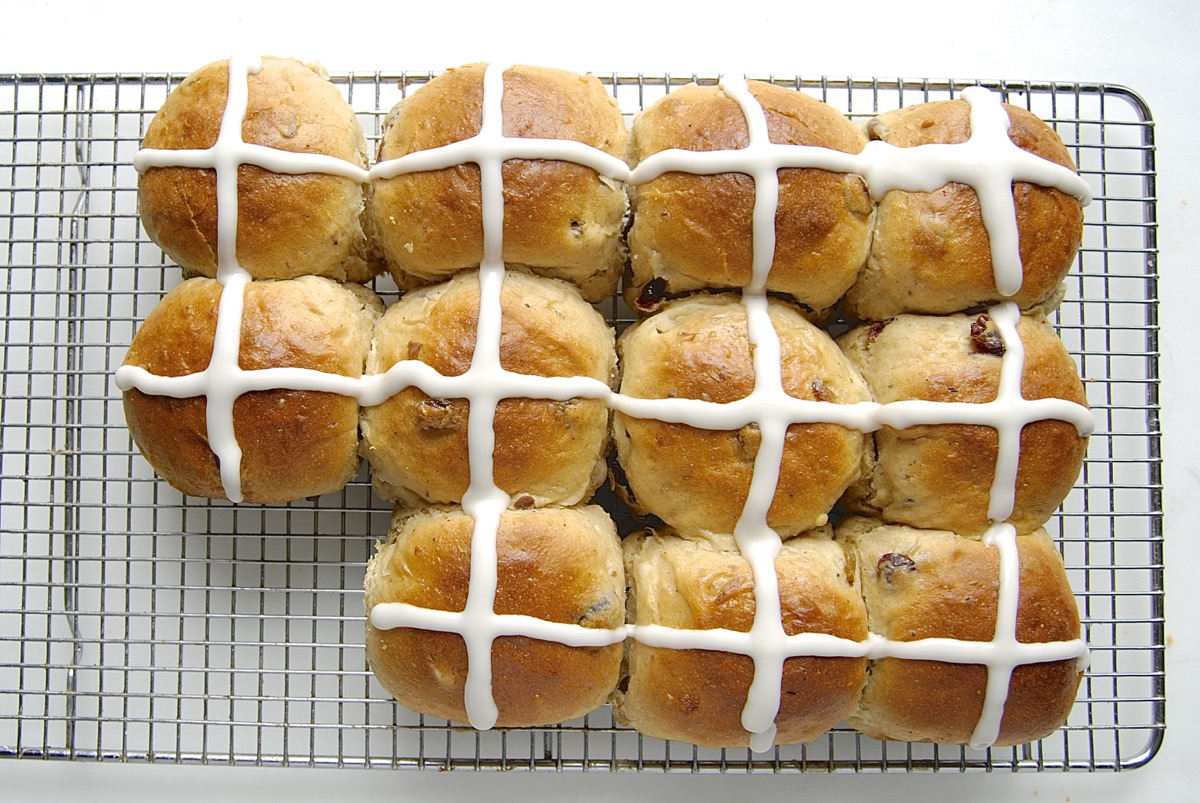
Icing atop the cooled buns is the final touch.
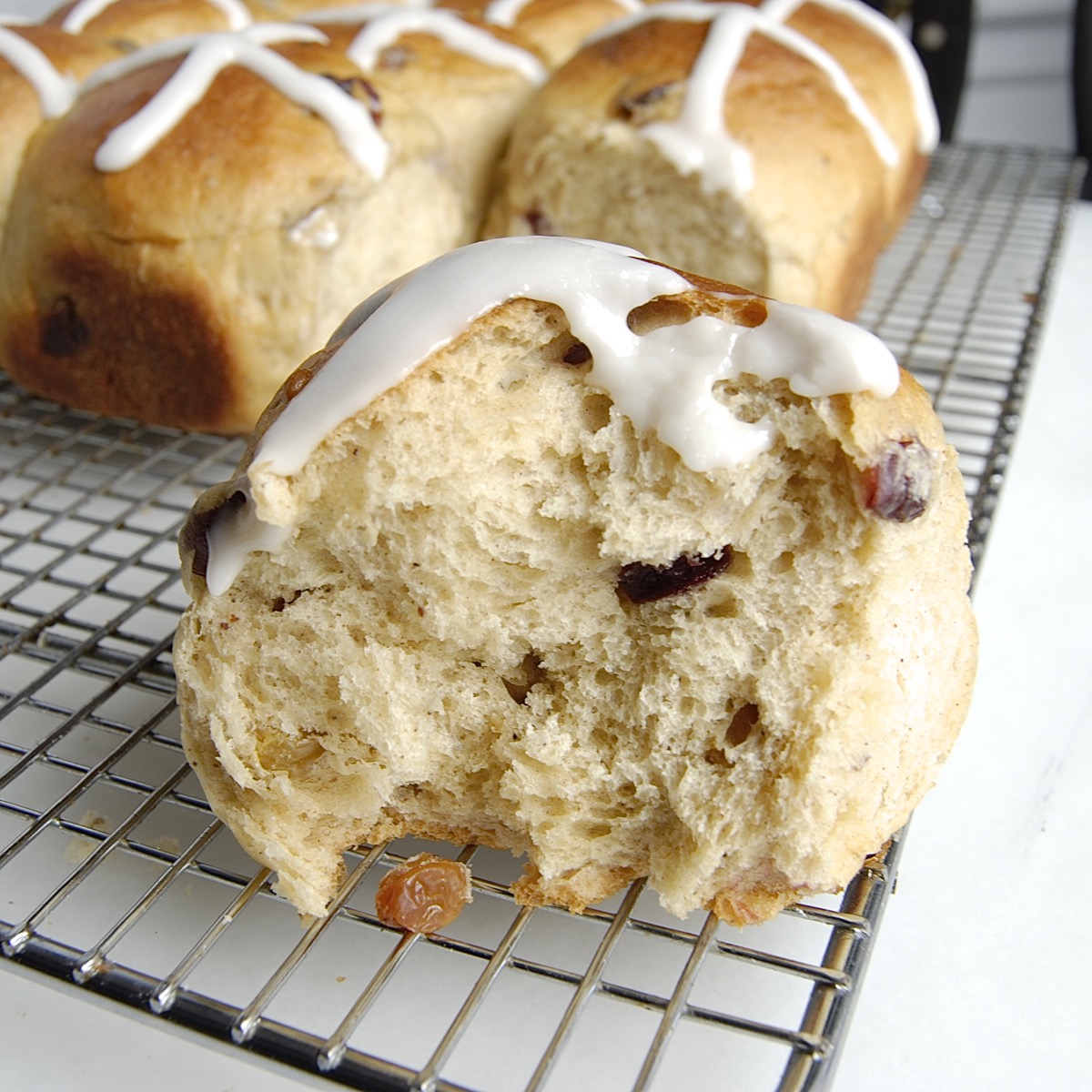
It's impossible to photograph soft, tender texture and extended shelf life. But here's a bun I broke open after a couple of days on the counter (well wrapped, of course). It's moist, soft, and delicious.
Four days post-baking, the buns were just starting to dry out a bit. But contrast that to the typical sweet roll, which often seems to toughen up within hours of its emergence from the oven.
As a long-time devoted fan of soft bread and rolls, I'm sold on tangzhong. Try some recipes on our site that use this technique, such as Japanese Milk Bread Rolls and Soft Cinnamon Rolls.
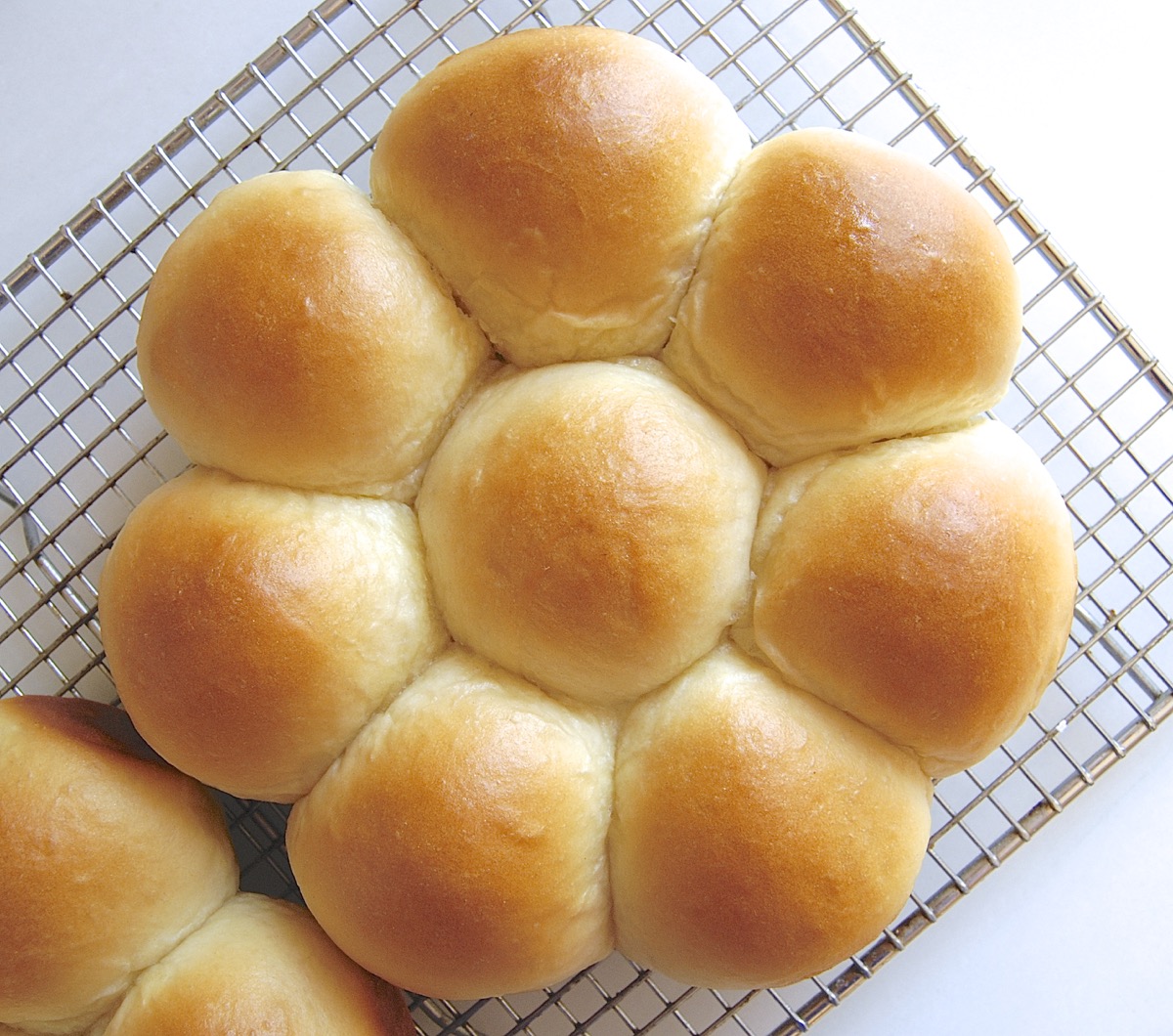
We've also retrofitted existing recipes to incorporate tangzhong: Easy Hot Cross Buns, Classic Sandwich Bread, and Golden Pull-Apart Butter Buns (above) include tangzhong directions via a tip at the end of each.
Give any of these a try; if you're a soft bread aficionado, I think you'll enjoy the results.
I've also started experimenting with converting existing recipes to the tangzhong technique. Does it work with every soft yeast bread recipe? The answer is a qualified "yes," but not without some tweaks based on dough hydration — plus a bit of math. Stay tuned for a future tangzhong post detailing my results!
Do you have your own special trick for keeping soft rolls and yeast loaves fresher longer? Please share in "comments," below.

